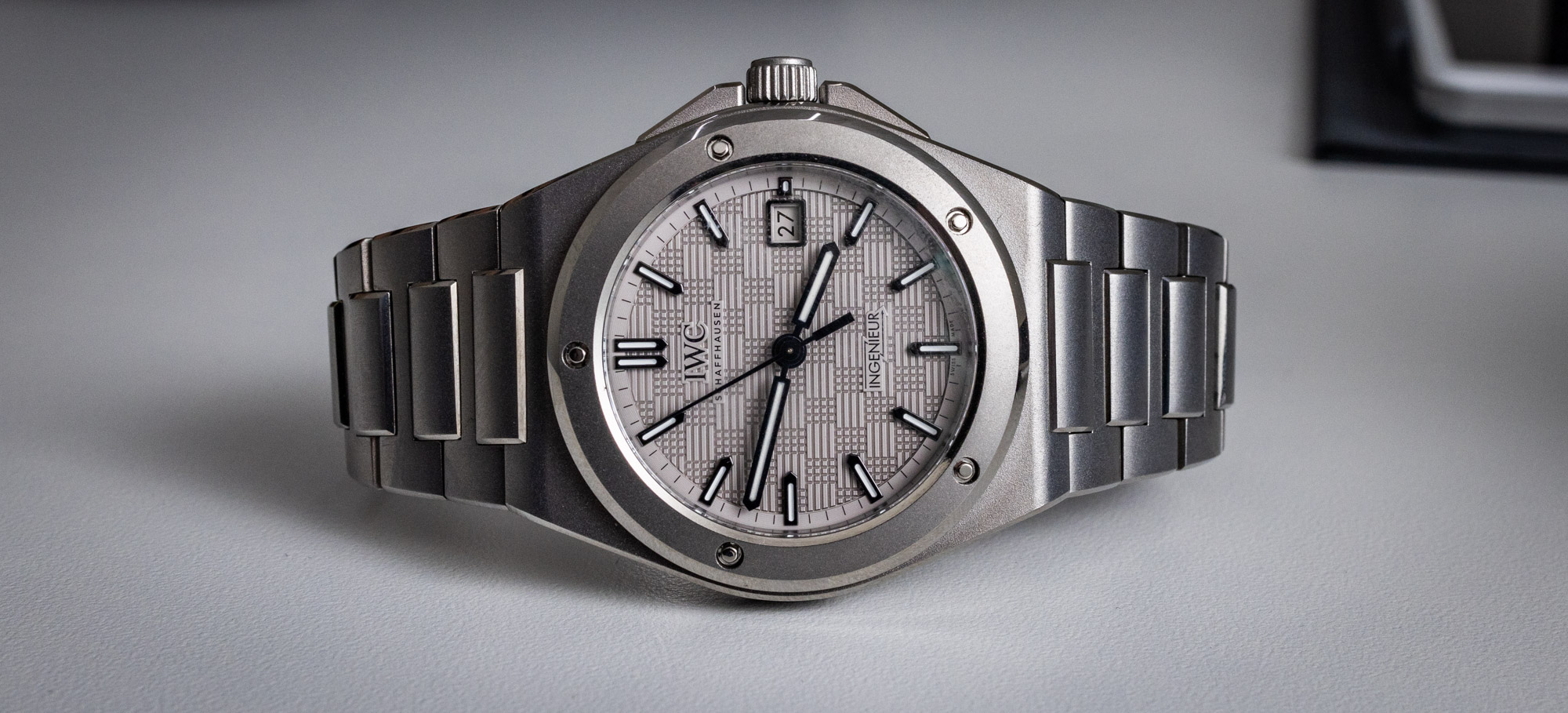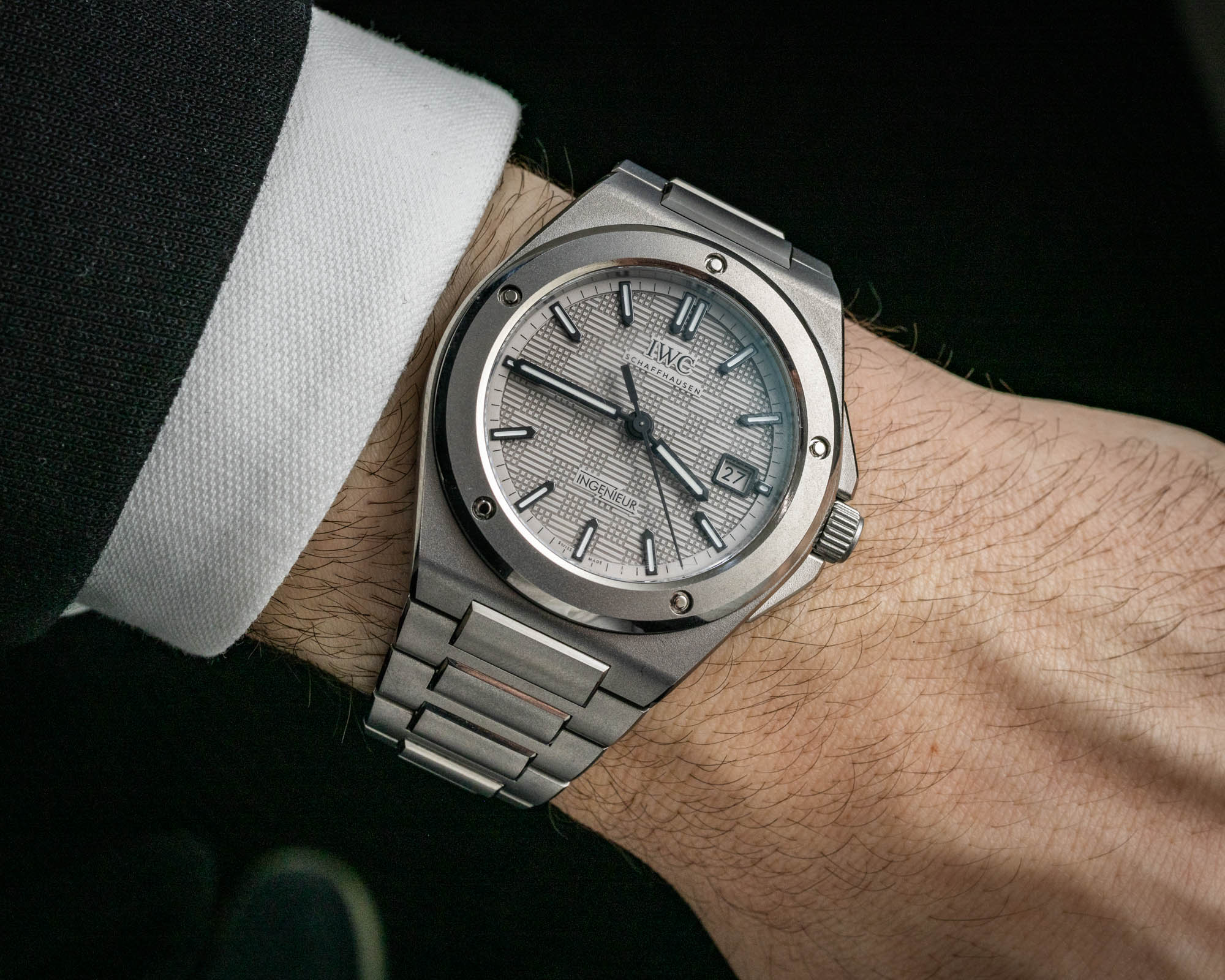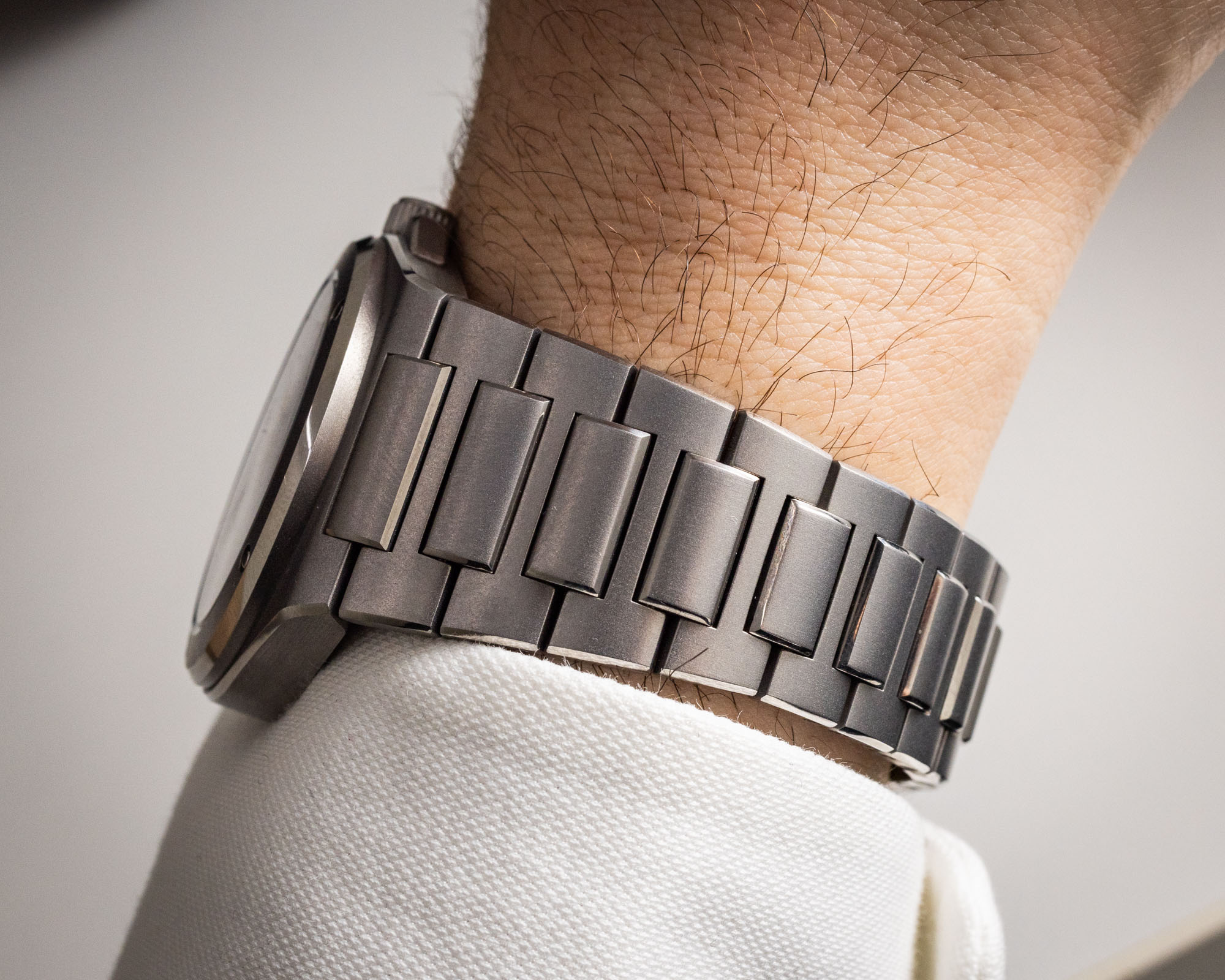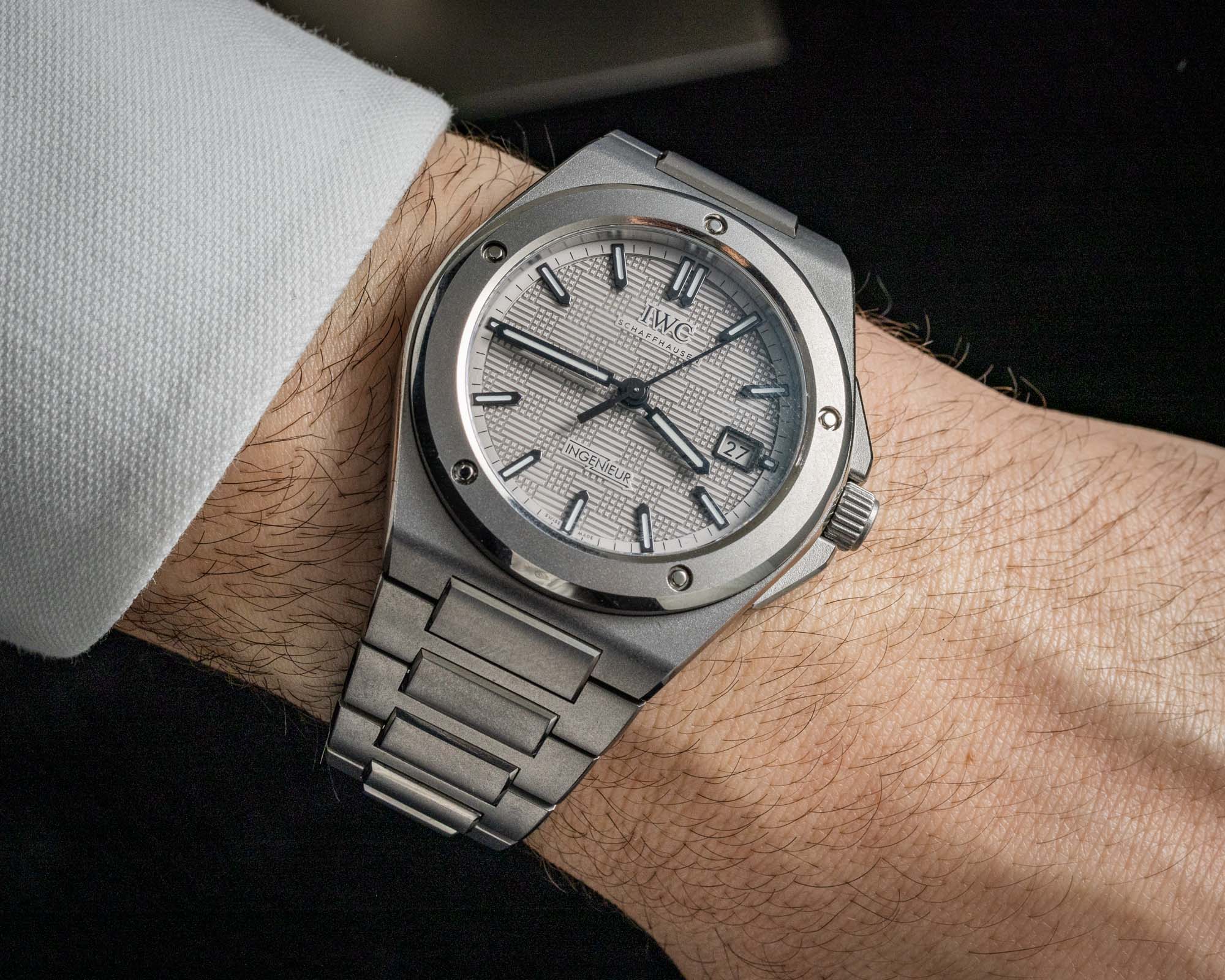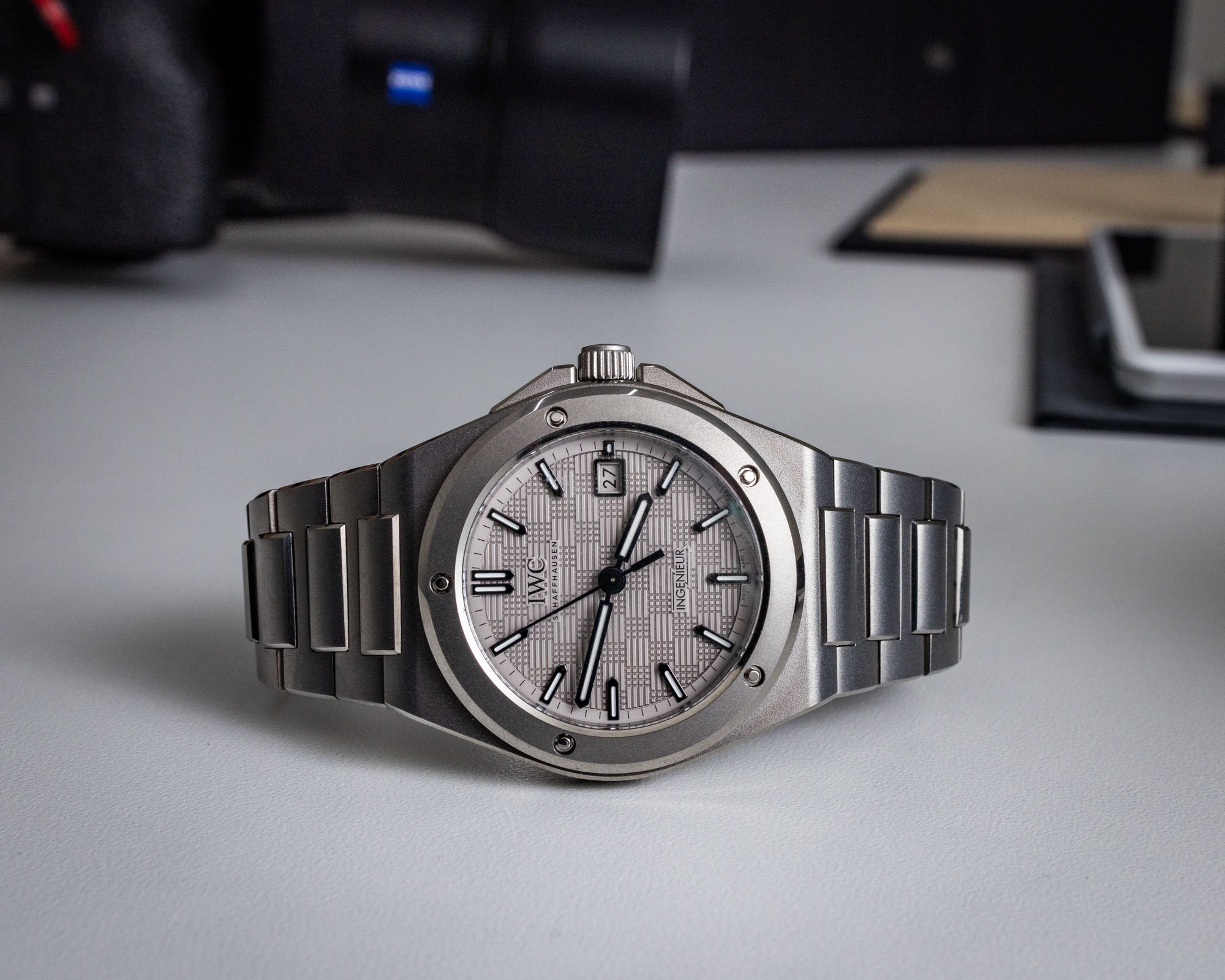In my opinion, one of the most important new watch releases from 2023 has been the return of the Gerald Genta-designed IWC Ingenieur. Although there are countless integrated bracelet watches available these days, the new Ingenieur isn’t just another offering within this crowded space, but rather it faithfully reimagines the original Ingenieur SL ref. 1832, which debuted back in 1976 and was one of Gerald Genta’s own creations. When IWC announced the revived Ingenieur earlier this year, four different models were part of the launch, and sitting rather quietly alongside the three colorways of the classic stainless steel version is a fourth rendition of the IWC Ingenieur Automatic 40 that is crafted entirely from titanium. While it does represent a premium option, the titanium Ingenieur also offers a noticeably more utilitarian appearance compared to its stainless steel siblings, and it might be my personal favorite among the current quartet of IWC Ingenieur models.
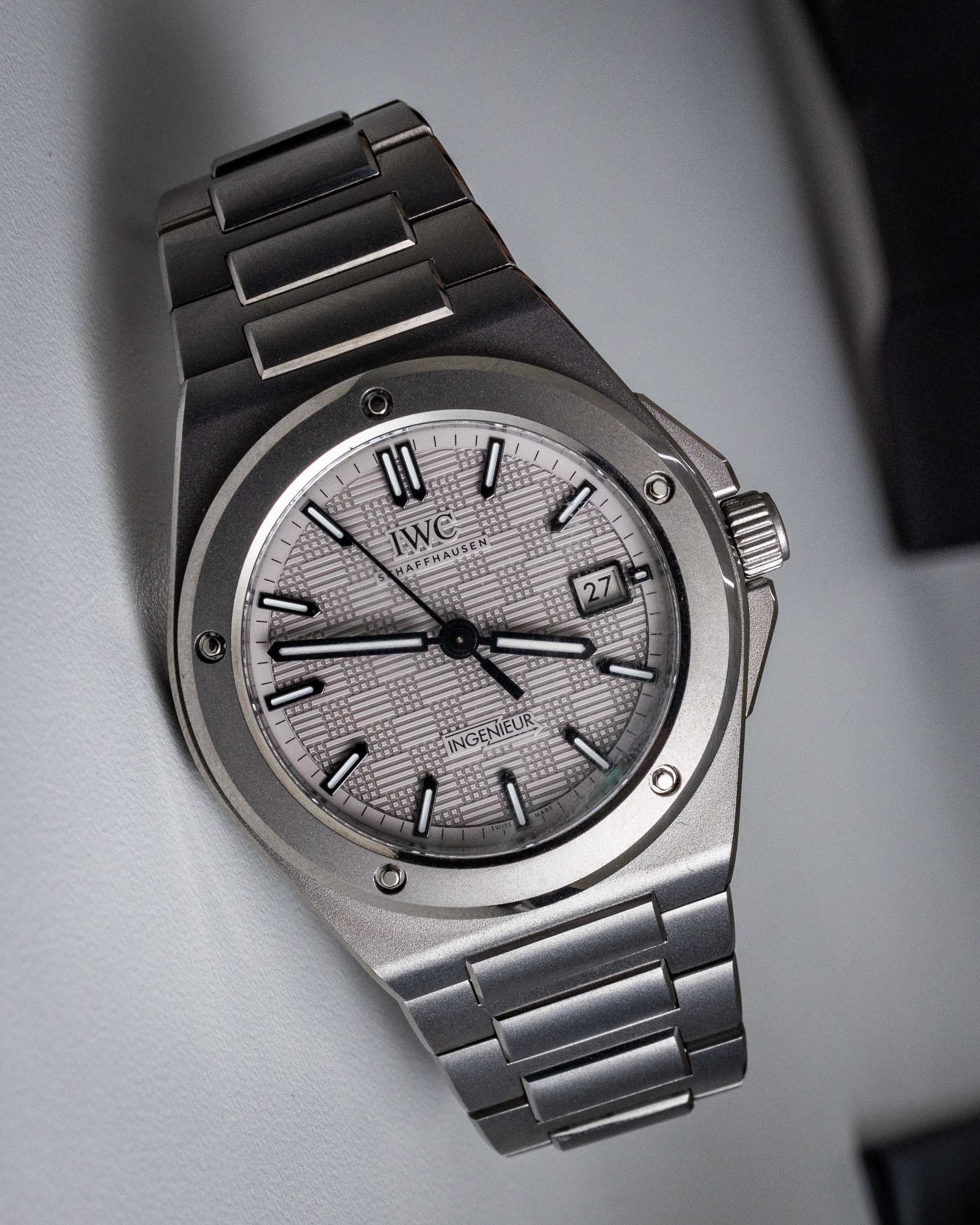
Throughout the years, the IWC Ingenieur has been produced in a variety of forms, and when the model first appeared in the mid-1950s as the brand’s dedicated antimagnetic wristwatch, the Ingenieur originally had a traditional round-shaped case. Although the Ingenieur represents an important part of IWC’s history, it didn’t gain its own identity until Gerald Genta gave it his signature aesthetic overhaul in 1976, and that is a large part of the reason why this new generation of IWC Ingenieur watches is such an important release. Throughout his life, Gerald Genta designed countless watches, but the integrated bracelet version of the Ingenieur has always been one of the cult favorites from his vast portfolio of works. While the Royal Oak and Nautilus are arguably Genta’s two most famous creations, the IWC Ingenieur has always represented the “other” Gerald Genta integrated bracelet watch with a more utilitarian spirit, and for many years, the Ingenieur was the non-obvious choice for collectors that could be purchased for a fraction of the price.
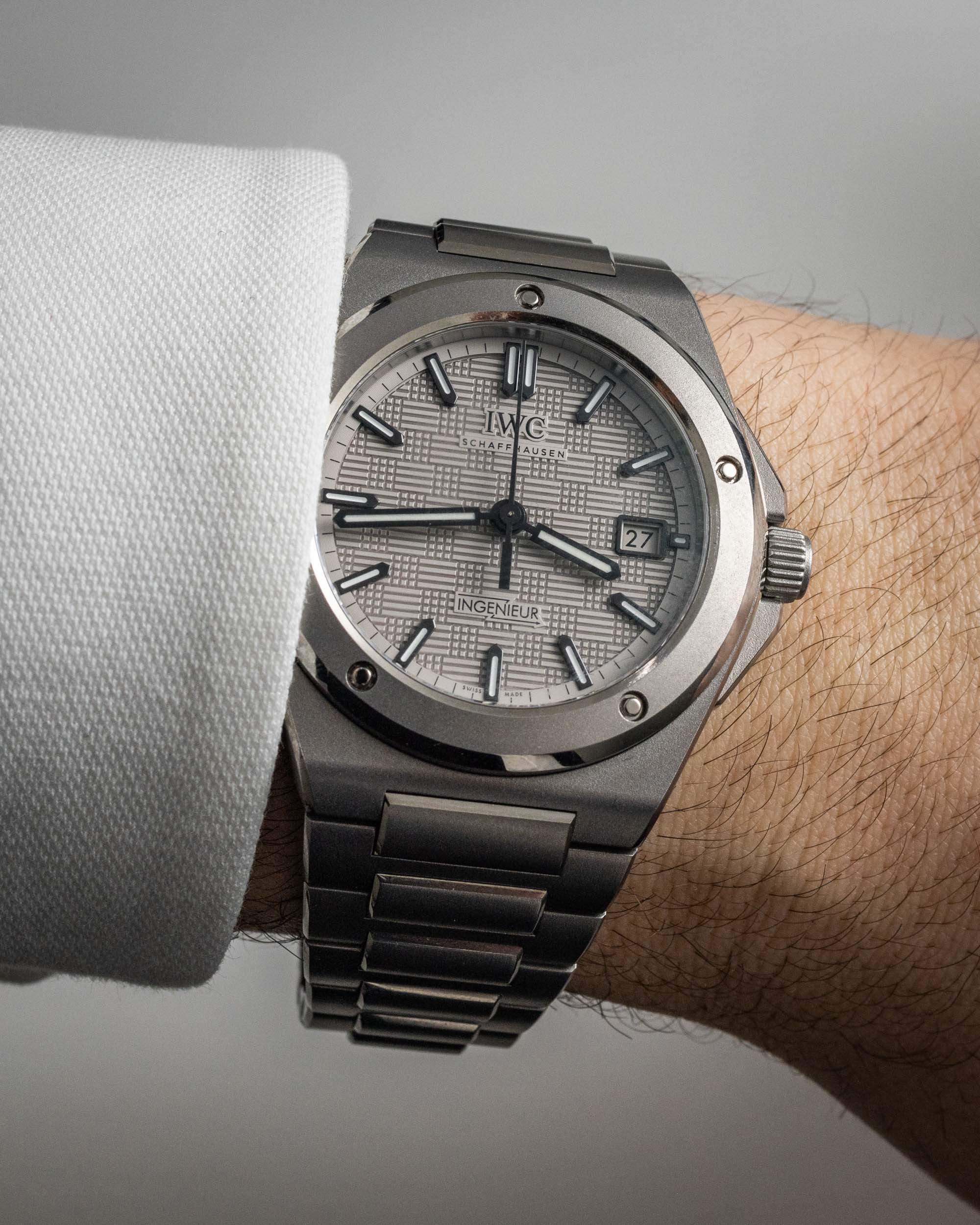
From a design and construction standpoint, the titanium IWC Ingenieur Automatic 40 ref. IW328904 is largely the same watch as the standard stainless steel model available with the choice of three different dial colors, although it does feature a few notable differences, aside from the material used for its case and bracelet. Despite being the more expensive version of the Ingenieur, this titanium model leans into the tool-watch heritage of the collection, and it offers a more utilitarian take on this historically overlooked Gerald Genta design. Rather than being finished with brushed and polished surfaces, the case and bracelet of the titanium Ingenieur Automatic 40 are primarily sandblasted with small high-polished accents on the bevels of its edges, and this difference in finishing creates a significantly more relaxed overall appearance. When combined with its lightweight grade five titanium construction, the matte sandblasted surfaces of the titanium IWC Ingenieur make it feel like a premium tool-oriented offering, rather than a luxury sports watch like its stainless steel siblings.
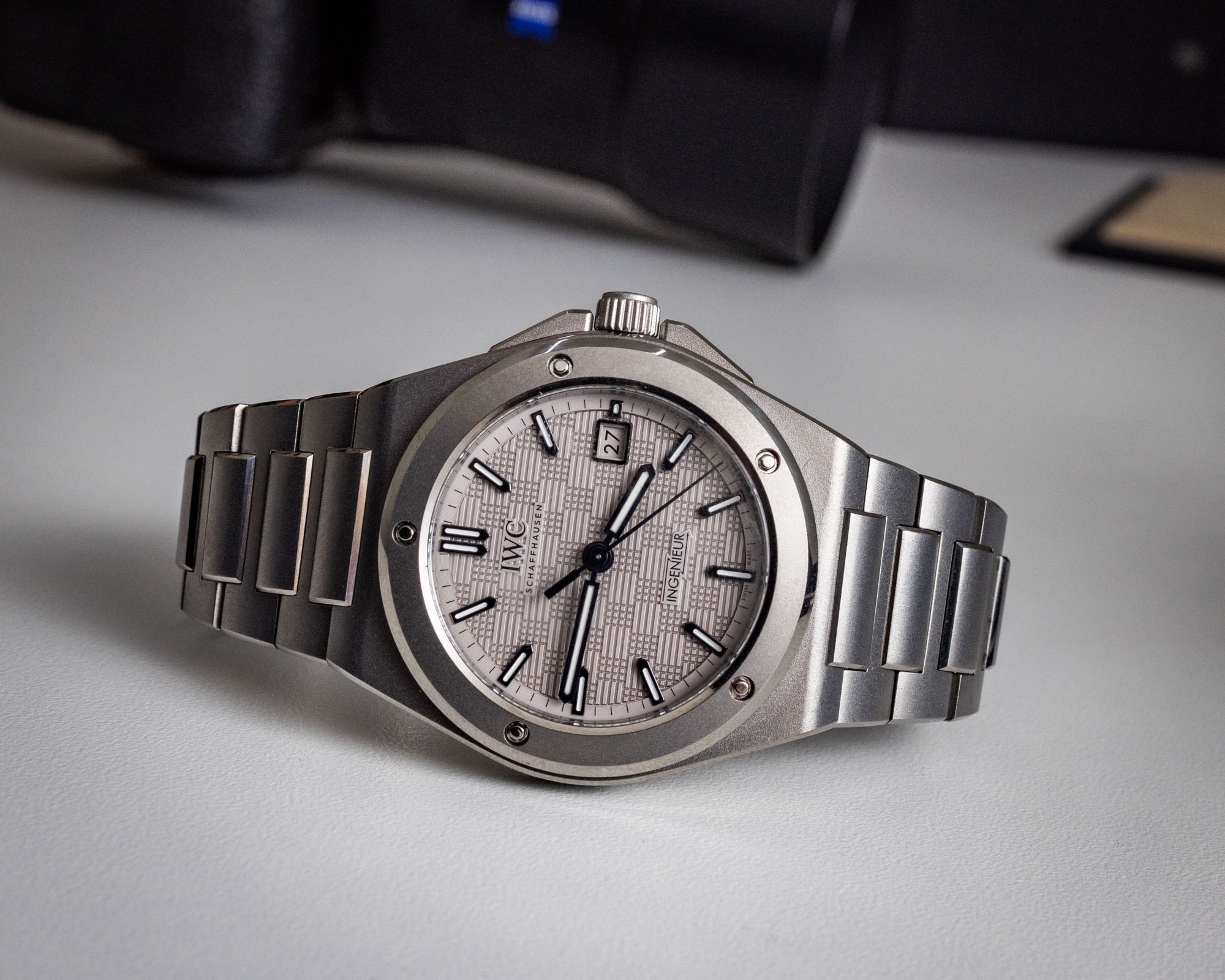
Due to the difference in case material, the titanium IWC Ingenieur is a tenth of a millimeter taller than its stainless steel counterparts, and it measures 40mm in diameter by 10.8mm thick, although the difference in thickness is entirely imperceptible once the watch is strapped to your wrist. The rest of the titanium Ingenieur is mostly the same as what you will find on the stainless steel models, with a flat sapphire crystal above its dial, a bezel secured by five exposed screws, a signed screw-down crown between angular guards at 3 o’clock, and a solid screw-down caseback that helps ensure the model’s 100 meters of water resistance. Like its stainless steel siblings, the titanium Ingenieur also features a soft-iron internal case that surrounds its movement to protect it from magnetic fields, although this detail isn’t something that can be observed, as it remains hidden under the solid titanium caseback. While much of the overall design of the new IWC Ingenieur Automatic 40 is based upon the original Ingenieur SL from 1976, the crown guards are a modern addition, although I personally find them to be a welcome touch that further promotes the utilitarian design ethos of this particular model.
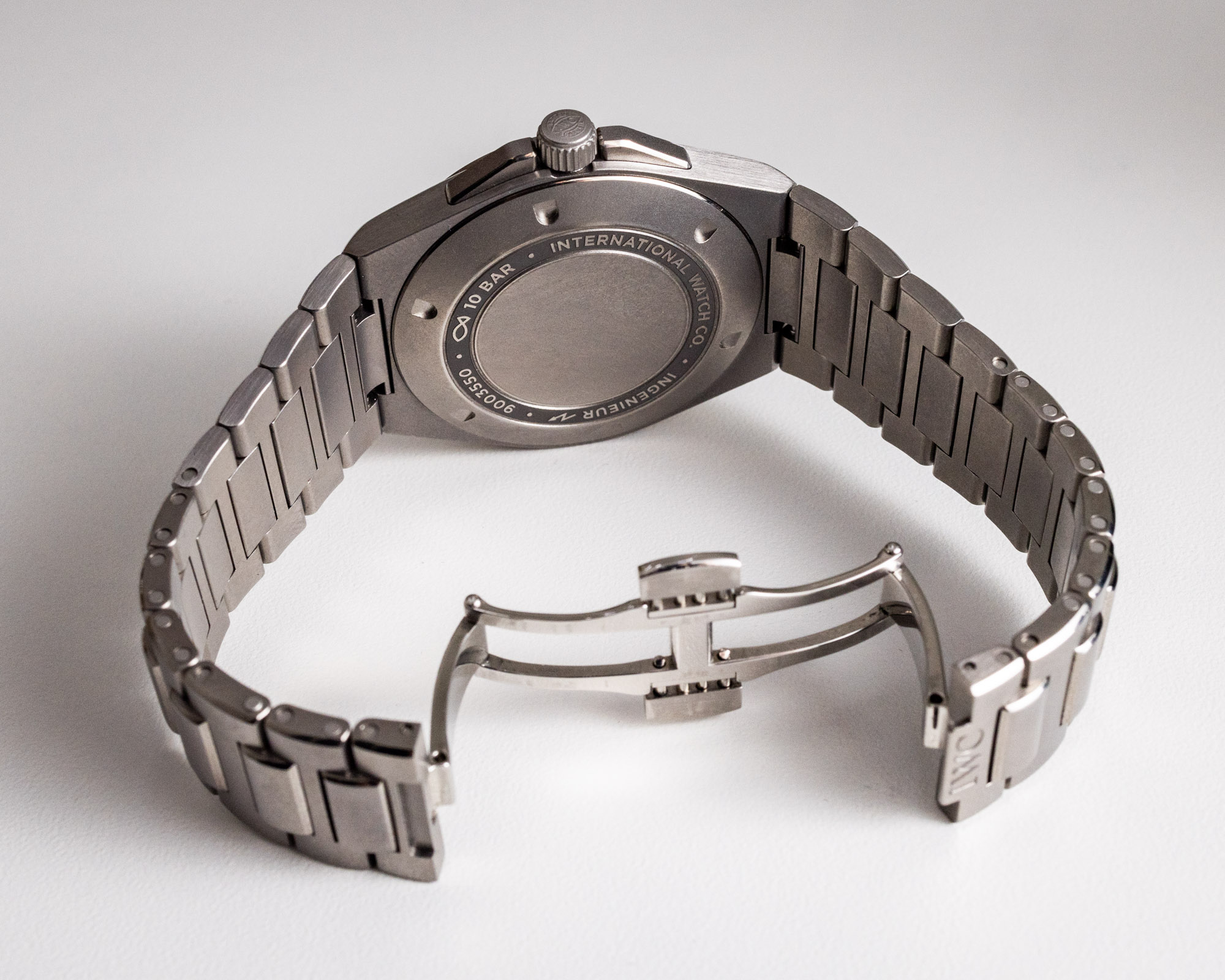
The dial fitted to the titanium IWC Ingenieur Automatic 40 offers the same overall style as what can be found inside its stainless steel counterparts, and it features applied luminous hour markers, a date window at 3 o’clock, and an intricate checkerboard motif embossed into its surface, which is essentially a more prominent and dramatic rendition of the pattern that appears on certain examples of the original Genta-designed Ingenieur SL. While the dial colors available for the stainless steel version of the Ingenieur Automatic 40 are white, black, and teal green, the titanium model is exclusively offered with a gray dial that creates a monochromatic appearance when paired with its matte titanium case and bracelet. Additionally, rather than having polished hands and hour markers, the titanium version of the Ingenieur Automatic 40 further leans into the tool watch design ethos of the model with a blackened finish on these components, and this both increases their legibility while also further leaning into the utilitarian spirit of the model.
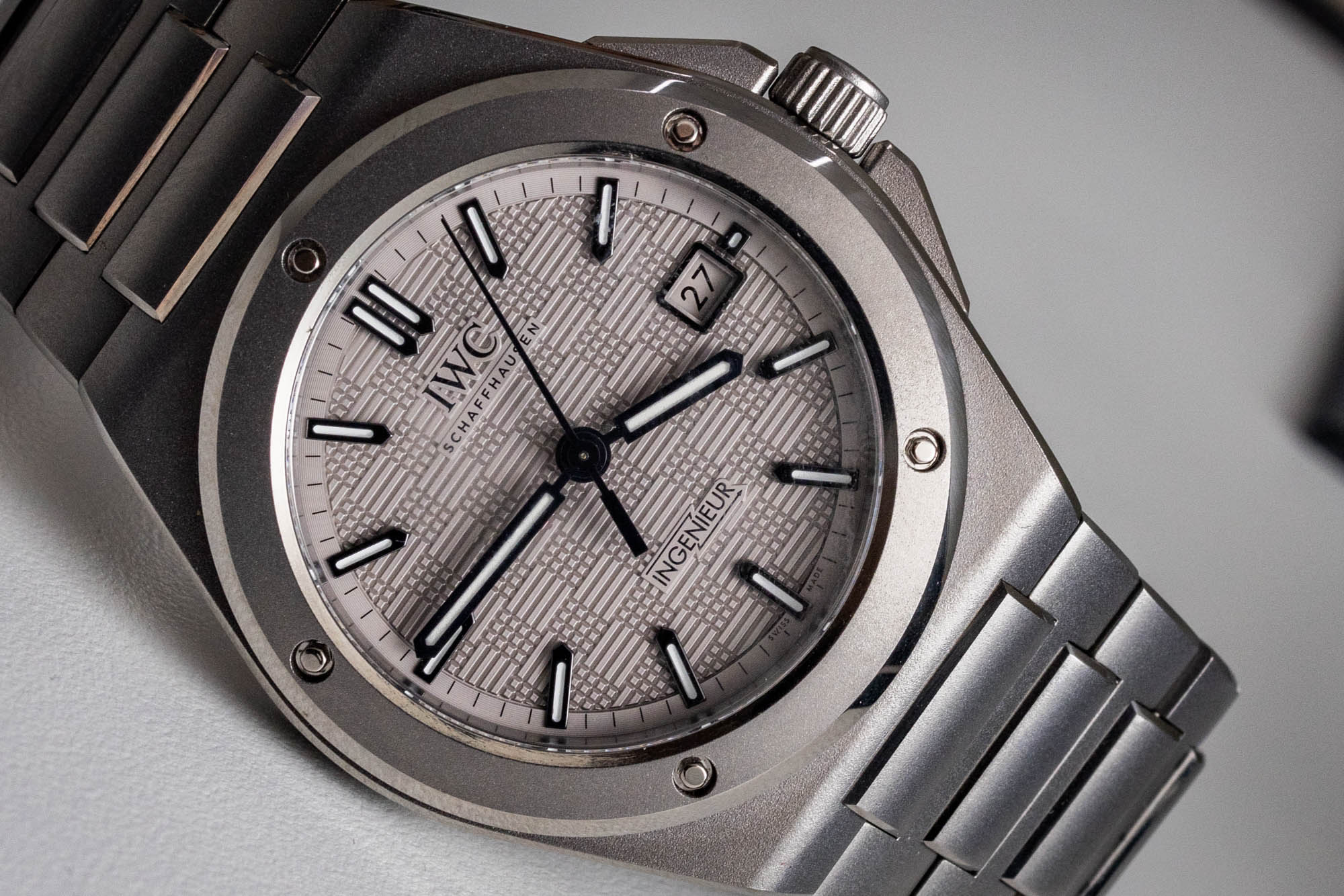
Powering the titanium Ingenieur Automatic 40 is the same IWC manufacture Caliber 32111 automatic movement that you will find inside its stainless steel siblings, which runs at a frequency of 28,800 vph (4 Hz) with a power reserve of 120 hours. All things considered, the Cal. 32111 offers fairly impressive specs with a significantly longer duration of autonomy compared to what you get from many other designs. However, since the concept of the Ingenieur is an antimagnetic wristwatch for scientists and engineers, it would have been a nice touch to see IWC use a movement that was entirely antimagnetic and didn’t require the use of an internal soft-iron shield. With that in mind, the escape wheel and pallet lever are both made from silicon on all of IWC’s Cal. 32000 series movements, which means that even without its antimagnetic shield, the modern Ingenieur would still be more resistant to magnetism than your average wristwatch. Furthermore, since the height of the IWC Ingenieur Automatic 40 still comes in under 11mm, I fully understand the brand’s decision to opt for the simple yet effective method that ultimately provides symmetrical results during any real-world applications.
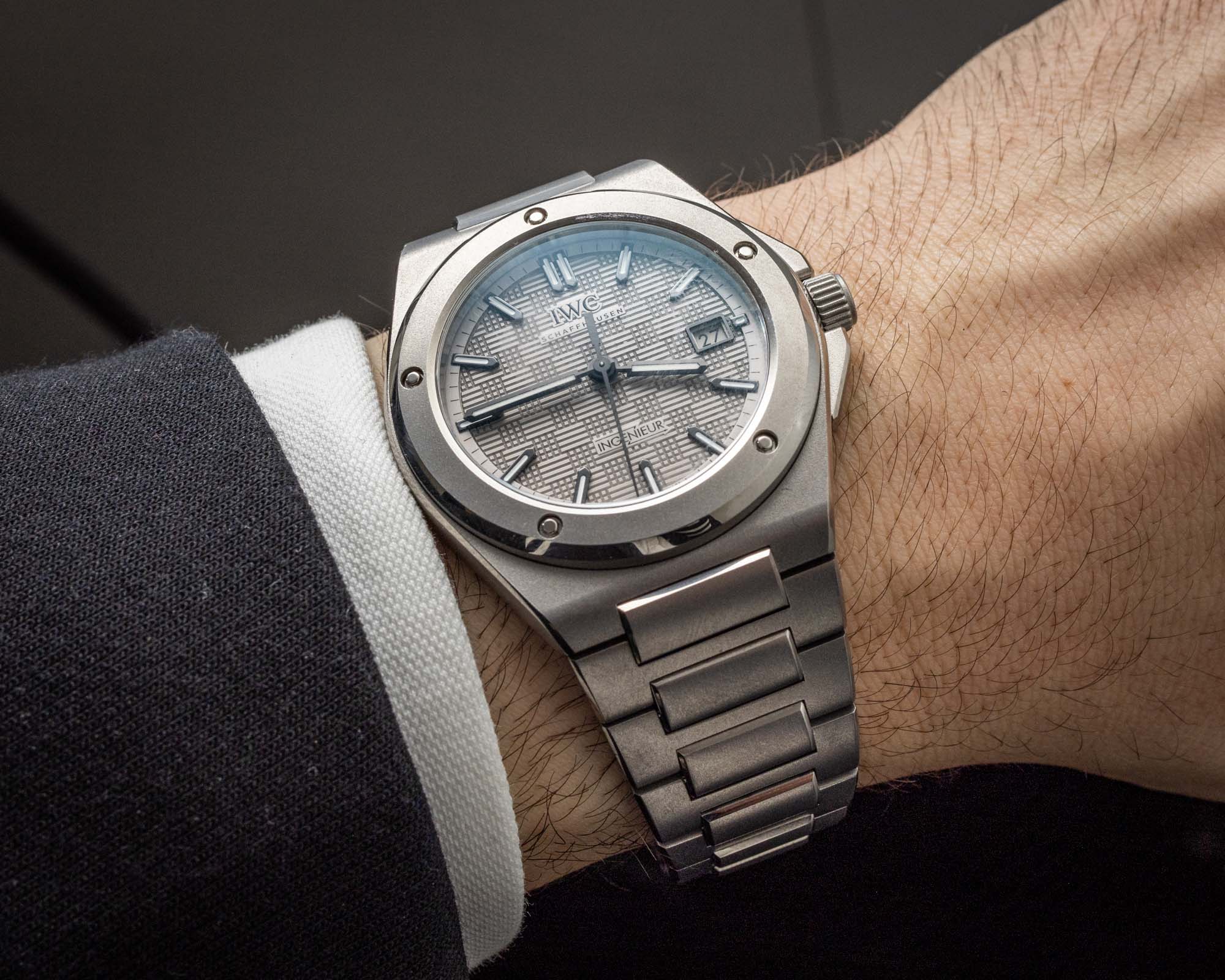
The matching titanium bracelet attaches by having its 14mm-wide center links slot directly into the upper and lower sides of the case to create a highly cohesive overall appearance. Additionally, IWC has made the Ingenieur Automatic 40 a truly integrated bracelet watch, and it lacks the same quick-release system that you will find on the majority of the brand’s other straps and bracelets. With a rounded H-link structure, the bracelet is very much the modern version of what can be found on the original Ingenieur SL from the 1970s, although unlike both its vintage predecessors and stainless steel counterparts, the titanium bracelet has sandblasted surfaces set against its bright high-polished bevels, and this further helps to create the premium tool watch feel that distinguishes the titanium Ingenieur Automatic 40. Although IWC offers an alternate style of folding clasp with an integrated extension system as an accessory for the Ingenieur, the standard option is a traditional butterfly-style folding clasp, which was specifically selected for the model because it offers the thinnest overall structure and allows the bracelet to create a seamless appearance across the bottom of the wrist.
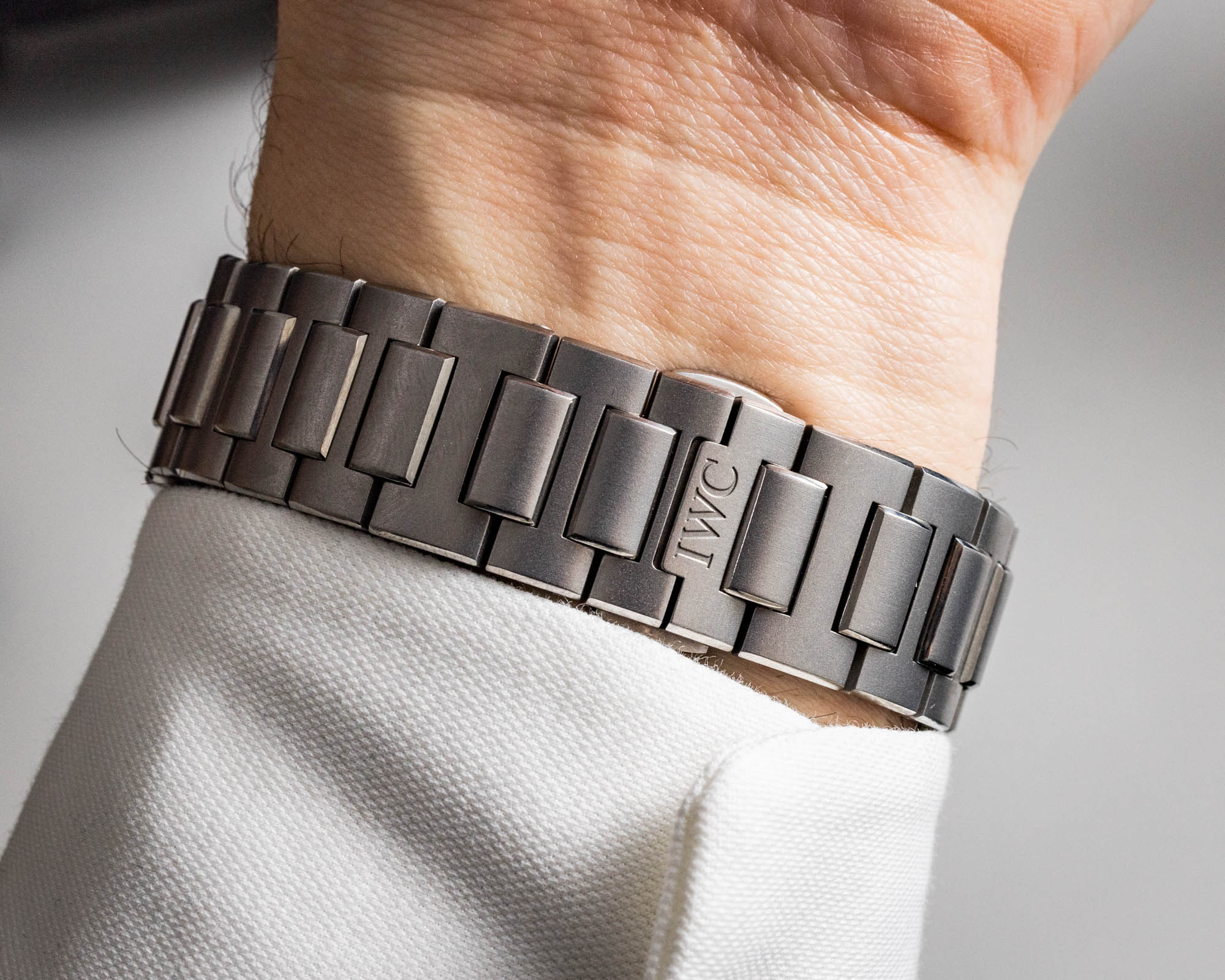
Aside from wishing that IWC had somehow found a way to integrate an extension system into its butterfly-style folding clasp, I think the brand did an excellent job with the Ingenieur Automatic 40, and I was one of the many people who were thrilled to see Gerald Genta’s design language return to the Ingenieur collection. Additionally, I sincerely appreciate that IWC didn’t just re-create the vintage model, but rather decided to use it as the basis for this new generation, while also incorporating other design details from more contemporary Ingenieur watches to bring the collection into the modern era. While the stainless steel versions of the IWC Ingenieur Automatic 40 offer the luxury-oriented experience of a premium integrated bracelet watch, this monochromatic model in sandblasted titanium represents a very different offering with a noticeably more utilitarian spirit that still manages to retain everything about the design of the original Ingenieur that made it a favorite among collectors.
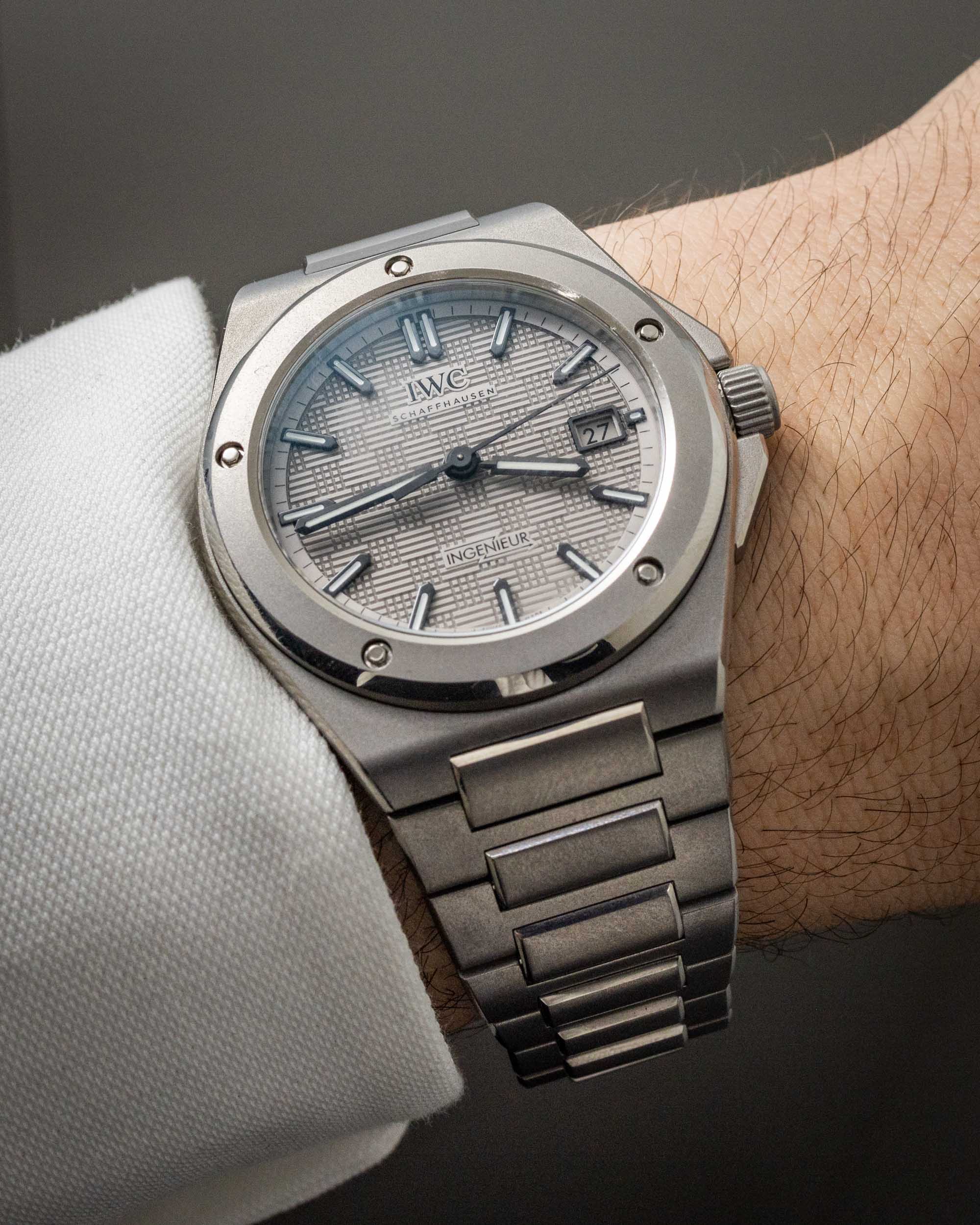
When IWC first announced the Ingenieur Automatic 40, most people enthusiastically agreed that the brand had done a great job with its design, although the single most common criticism of the new series was in regards to its premium positioning within IWC’s modern catalog. As a point of reference, the standard stainless steel Ingenieur Automatic 40 costs the exact same as the full-titanium, bracelet-equipped version of the brand’s recently-announced Pilot’s Watch Performance Chronograph 41, which also features a ceramic bezel and a more complex internal movement. Additionally, with an official retail price of $14,600 USD, the titanium IWC Ingenieur Automatic 40 represents the most expensive model from the current lineup, although I have an easier time overlooking its premium positioning, as there are fewer compelling alternatives that are crafted from titanium. At the end of the day, the IWC Ingenieur has always represented the under-the-radar choice for a true Gerald Genta-designed integrated bracelet watch, and the tool-oriented design ethos of the titanium model further helps to separate it from the wealth-enthusiasts stigma that often accompanies this popular category of timepieces. For more information on the IWC Ingenieur Automatic 40 in titanium, please visit the brand’s website.

